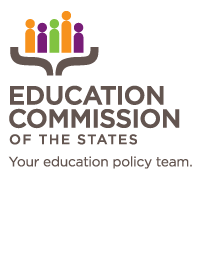The recent release of National Assessment of Educational Progress data highlights the scale of interrupted learning caused by the COVID-19 pandemic and points to the exacerbation of existing inequities in student opportunity and achievement. As school accountability requirements return following a two-year pause, states are considering how to effectively measure school performance and student learning while supporting schools and districts in equitable learning recovery.
Equipping schools and communities with the information they need to inform academic interventions and student supports is a vital first step in this process. The Illinois State Board of Education began this work prior to the pandemic with the development of their strategic plan, which centered equity as a foundational element in their vision for education in the state. Illinois students scored above the national average on the NAEP, and its fourth grade student scores held steady from 2019 to 2022. The state reports seeing accelerated growth on state assessments in 2022, but also persistent gaps between student groups.
Following an intensive stakeholder engagement process, the board identified the development of the Equity Journey Continuum as a key tool to support districts in addressing inequities in three primary areas: student learning, learning conditions and elevating educators.
The Equity Journey Continuum is an informational tool included on a district’s annual report card that tracks the district’s progress in closing equity gaps. This tool analyzes data that is already collected by the state board of education and categorizes gaps in performance, opportunities and resources based on three indicators on the continuum from Step 1 (large gaps) to Step 4 (minimal gaps). We spoke with Illinois State Superintendent of Education, Dr. Carmen I. Ayala, to learn more about the continuum, its development and how it can guide districts in improving learning environments for all students.
While the Equity Journey Continuum is included on annual report cards, it is not directly tied to school accountability classifications. The continuum is designed to inform local action to improve student learning opportunities and outcomes. There are no mandates. “It’s like going to the doctor and having your blood pressure taken. If it’s high, the doctor is not going to punish you,” Superintendent Ayala explained. “However, following her advice will make you healthier, just as taking steps toward equity is bound to better a district’s accountability outcomes.”
In this spirit, the state board prioritized the usefulness of the tool for districts and communities. They brought together about a dozen districts to pilot the tool and solicit feedback. After the pilot, the board included a section on the report card for districts to provide context on their continuum placement.
The board also partnered with the Institute for Racial Justice at Loyola University of Chicago to provide a series of professional development webinars for administrators. These webinars were facilitated to help administrators analyze their data and build capacity to communicate their findings with their communities. Districts also had eight months to review and ask questions about their data before the continuum was published.
These efforts to build local capacity have helped lay the groundwork for the rollout of the continuum, Ayala shared, “We were prepared for pushback because equity initiatives can easily be misunderstood. But so far, the rollout has been very smooth.” Ayala attributed this, in part, to a commitment the board made to avoid punitive classifications associated with the tool. She told us that “like all the data on the report card, the Equity Journey Continuum is meant to inspire conversations, and importantly, ground those conversations in the reality of verified numbers, rather than on feelings or personal impressions.”
The continuum offers an example of how states can leverage data collected as a part of their accountability system, on teacher access and shortages and in statewide longitudinal data systems to provide a clear picture of student access and opportunity at the local level. Equipped with this data, school communities could have the information necessary to chart their paths forward with equitable opportunity and outcomes at the center of their efforts.









